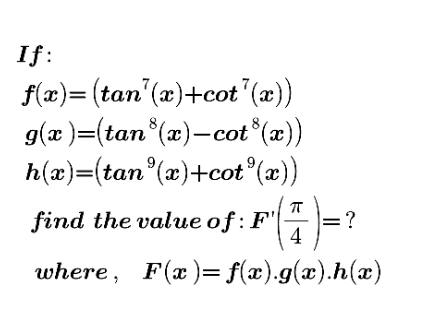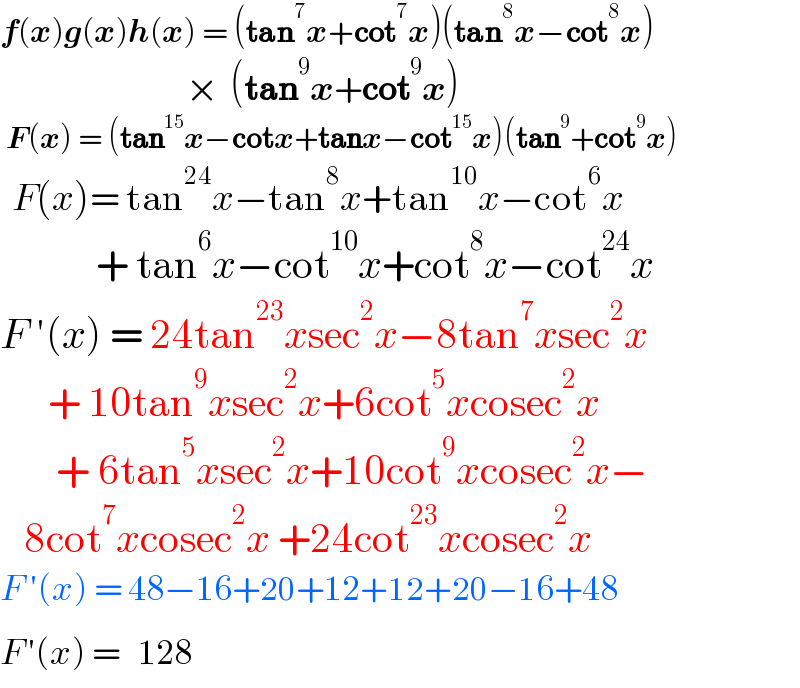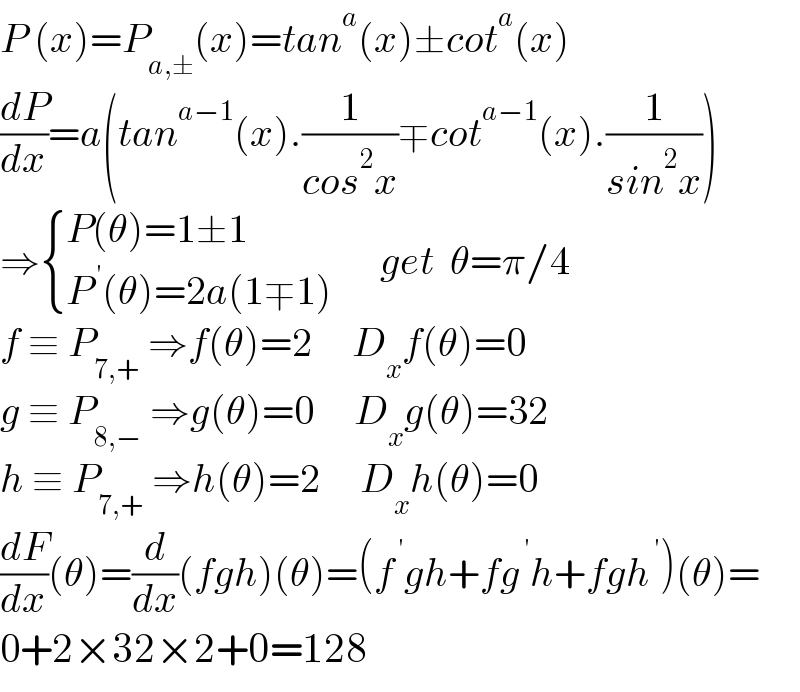
Question and Answers Forum
Question Number 173834 by mnjuly1970 last updated on 19/Jul/22

Commented by infinityaction last updated on 20/Jul/22

Commented by Tawa11 last updated on 19/Jul/22

Answered by mahdipoor last updated on 19/Jul/22

Commented by mnjuly1970 last updated on 19/Jul/22

Commented by mahdipoor last updated on 20/Jul/22

Answered by mr W last updated on 20/Jul/22
![F(x)=f(x)g(x)h(x) ln F(x)=ln f(x)+ln g(x)+ln h(x) ((F′(x))/(F(x)))=((f′(x))/(f(x)))+((g′(x))/(g(x)))+((h′(x))/(h(x))) F′(x)=g(x)h(x)f′(x)+f(x)h(x)g′(x)+f(x)g(x)h′(x) f((π/4))=h((π/4))=2 g((π/4))=0 F′((π/4))=f((π/4))h((π/4))g′((π/4))=4×g′((π/4)) =4×[((8 tan^7 x)/(cos^2 x))+((8 cot^7 x)/(sin^2 x))]_(x=(π/4)) =32×[(1/(1/2))+(1/(1/2))] =32×4=128](Q173857.png)
Commented by mnjuly1970 last updated on 20/Jul/22

